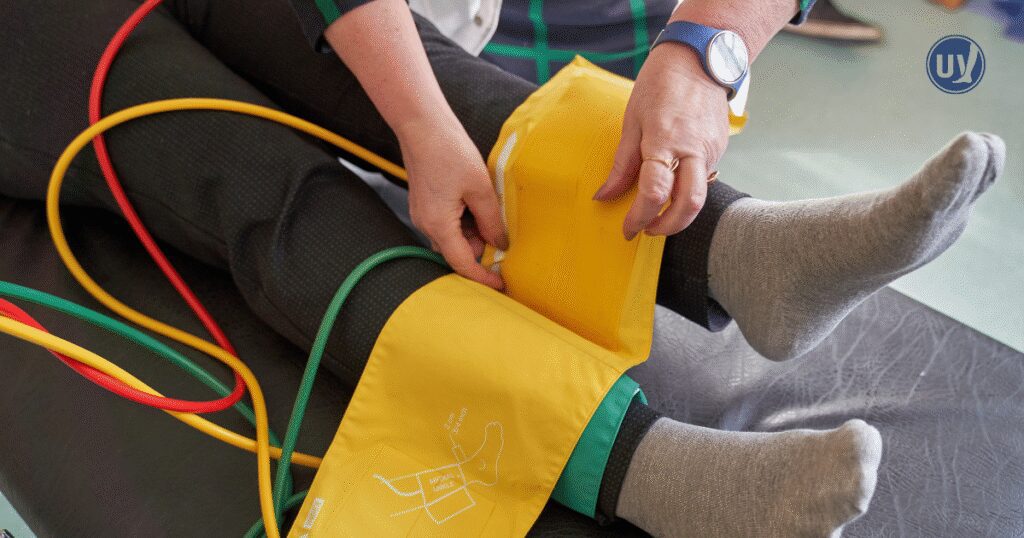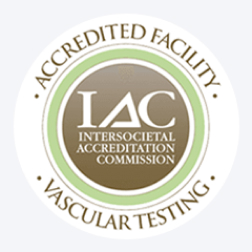Peripheral Artery Disease, or PAD, is a common circulatory condition in which narrowed arteries reduce blood flow to the limbs. Although PAD affects both men and women, the way the disease presents and progresses can vary significantly between genders. Understanding these differences is crucial for early diagnosis, effective treatment, and improved quality of life.
PAD often goes undiagnosed because its symptoms are subtle or mistaken for other conditions. Leg pain or cramping may be attributed to aging, arthritis, or general fatigue. This can delay medical evaluation and intervention, increasing the risk of serious complications, including heart attacks, strokes, or even limb loss.
Recognizing PAD early is vital, not only to preserve mobility but also to maintain overall cardiovascular health. The disease can reduce blood flow to the extremities, leading to discomfort, decreased physical activity, and a sedentary lifestyle. Over time, this can contribute to obesity, high blood pressure, and other cardiovascular issues, emphasizing the importance of timely awareness and intervention.
What Is PAD and How Does It Develop?
PAD occurs when atherosclerosis, the buildup of fatty deposits in the arteries, restricts blood flow to the limbs. Most commonly, this affects the legs, causing pain, numbness, or weakness in the lower extremities. Reduced circulation also means that muscles and tissues receive less oxygen, which can severely limit physical activity and overall mobility.
As PAD progresses, it can lead to critical limb ischemia, a severe blockage of blood flow that can cause tissue damage and even require amputation. Understanding how PAD develops and recognizing its early signs is essential for preventing severe complications.
Common Symptoms of PAD
Symptoms of PAD can vary widely and sometimes overlap with other conditions, making diagnosis challenging. Common signs include:
- Leg pain or cramping during walking or physical activity
- Numbness, tingling, or weakness in the legs
- Coldness in the lower legs or feet
- Slow-healing wounds or sores on toes, feet, or legs
Although these symptoms can affect both men and women, the severity, timing, and perception of symptoms often differ by gender, making awareness of gender-specific manifestations essential.
How PAD Symptoms Differ Between Men and Women
Symptoms in Men
Men are generally more likely to develop PAD than women, and they often experience the classic symptom of claudication, which is leg pain or cramping triggered by physical activity. This clear pattern usually prompts men to seek medical evaluation sooner, leading to earlier diagnosis and treatment.
Men may also experience erectile dysfunction as a result of reduced blood flow, which can serve as an early indicator of broader vascular issues. Lifestyle factors such as higher rates of smoking, physical inactivity, and certain dietary habits may contribute to the higher prevalence of PAD in men. Recognizing these risk factors can help men adopt preventive measures, such as quitting smoking and engaging in regular exercise.
Symptoms in Women
Women with PAD often present less specific and more diffuse symptoms, which can delay diagnosis. Common complaints among women include:
- Fatigue or heaviness in the legs
- Atypical leg or foot pain
- Rest pain that occurs even without physical activity
These subtle symptoms can be mistaken for other conditions, such as arthritis or neuropathy, and may lead to delayed medical care. Societal and psychological factors may also influence how women perceive and report their symptoms, sometimes causing them to prioritize other responsibilities over personal health.
Hormonal differences play a significant role in PAD development. Estrogen, which is more prevalent in premenopausal women, has a protective effect on blood vessels. This hormone helps maintain flexibility in artery walls and slows atherosclerotic buildup. However, after menopause, women lose this protective effect, increasing the likelihood of PAD onset and progression. Postmenopausal women need to be especially vigilant about cardiovascular health and consider regular screenings to catch PAD early.
Diagnóstico de la arteriopatía periférica
Early diagnosis is key to preventing complications. Healthcare providers use several methods to identify PAD:
- Ankle-Brachial Index (ABI): Compares blood pressure in the ankle and arm to assess reduced blood flow.
- Ultrasound: Non-invasive imaging that evaluates arterial blood flow and detects blockages.
- Angiography: X-ray imaging of the arteries, often used in advanced cases to guide treatment planning.
A thorough physical examination and review of the patient’s medical history, including risk factors such as smoking, diabetes, high cholesterol, and family history of cardiovascular disease, complement these diagnostic tests. Accurate diagnosis is crucial to developing an effective, personalized treatment plan.
Opciones de tratamiento para la arteriopatía periférica
Treatment for PAD focuses on reducing symptoms, improving quality of life, and preventing serious complications. Approaches vary based on disease severity, symptom presentation, and patient-specific factors.

Modificaciones del estilo de vida
Lifestyle changes are often the first line of defense against PAD. They can significantly improve circulation and overall cardiovascular health:
- Quit smoking to improve blood vessel health
- Engage in regular physical activity to enhance circulation
- Maintain a balanced diet to reduce cholesterol and plaque buildup
- Manage blood sugar levels if diabetic
These steps not only help manage PAD but also reduce the risk of heart attack, stroke, and other vascular complications.
Medicamentos
Depending on the severity of PAD, physicians may prescribe medications to manage symptoms and lower cardiovascular risk. Common medications include antiplatelets to prevent clot formation and statins to manage cholesterol. These treatments can help improve blood flow and reduce the likelihood of disease progression.
Surgical and Interventional Procedures
For advanced PAD or cases where lifestyle changes and medications are insufficient, procedures to restore blood flow may be recommended. Options include:
- Angioplasty: A minimally invasive procedure that opens narrowed arteries using a balloon and may involve stent placement.
- Bypass Surgery: Creates a detour around blocked arteries to restore blood flow to the limbs.
The choice of procedure depends on factors such as the location and severity of the blockage, overall health, and the presence of comorbidities.
Why Gender Awareness Matters in PAD Care
Understanding gender differences in PAD is crucial for healthcare providers and patients alike. Women’s symptoms can be subtle and easily overlooked, while men may present more classic signs. Personalized care that accounts for these differences can enhance outcomes, reduce delays in diagnosis, and improve patient adherence to treatment plans.
Patient-centered care also involves educating patients about their condition, empowering them to engage actively in decisions about their treatment, and supporting lifestyle modifications that complement medical interventions. By fostering open dialogue between patients and providers, both men and women can achieve better symptom management and overall vascular health.
Living with PAD
Living with PAD requires proactive management and ongoing care. Patients should maintain regular check-ups, monitor symptoms, and follow treatment plans carefully. Lifestyle changes such as increased physical activity, healthy nutrition, and smoking cessation play a significant role in long-term outcomes.
Education and support are equally important. By understanding how PAD affects men and women differently, patients can communicate more effectively with their healthcare providers, advocate for appropriate testing, and make informed choices about interventions. Support groups and educational resources can provide guidance, emotional support, and practical strategies for living well with PAD.
Actúe por su salud vascular
Peripheral Artery Disease is a serious condition, but with early detection, personalized treatment, and lifestyle adjustments, patients can manage symptoms and reduce the risk of complications. Recognizing gender-specific signs is key to ensuring timely diagnosis and effective care.
At United Vein & Vascular Centers, our experienced specialists provide comprehensive, patient-centered care tailored to your unique needs. From advanced diagnostics to minimally invasive procedures and lifestyle guidance, we are here to help you maintain healthy circulation and improve your quality of life.
Schedule a consultation today to take control of your vascular health and receive expert care designed for men and women alike. Find a UVVC clinic near you and start your journey toward better vascular health.
Preguntas frecuentes
Early signs of PAD can differ between genders. Men often experience leg pain or cramping during physical activity, while women may notice fatigue, heaviness, or atypical leg pain even at rest. Recognizing these subtle symptoms early is crucial for timely diagnosis and treatment.
PAD is diagnosed through a combination of physical examination, medical history, and diagnostic tests such as the Ankle-Brachial Index (ABI), ultrasound imaging, or angiography. These tools help measure blood flow and detect arterial blockages to guide effective treatment.
Yes. Adopting a heart-healthy lifestyle can significantly improve circulation and reduce PAD symptoms. This includes quitting smoking, exercising regularly, maintaining a balanced diet, and managing conditions like high blood pressure or diabetes. Lifestyle changes often complement medical or surgical treatments for optimal results.


